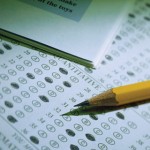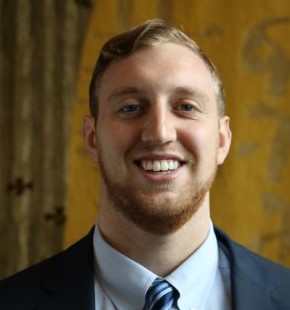By Rick Gautschi
 In M.O.C.H.A, Soc’y, Inc. v. City of Buffalo, Nos. 11-2184-cv and 10-2168-cv, July 30, 2012, 2nd Cir.,as permitted by a state statute, in late 1997, the City of Buffalo contracted with the state of New York’s Civil Service Department (CSD) to have the CSD develop an examination to be administered to fire fighters who sought promotions to the position of fire lieutenant. In response to the request, an associate personnel examiner at CSD spent approximately three years performing a job analysis of fire fighters at all ranks in departments across the state. As part of the analysis she, for example, assembled an extensive list of tasks that fire fighters. She then reviewed the list with a panel of experts on the administration of fire departments. She also developed a list of the skills, knowledge, abilities, and personal characteristics (SKAPs) that fire fighters needed to possess as of their first day on the job. Subsequently, she conducted two surveys of firefighters, in New York’s twelve largest jurisdictions other than New York City and Rochester, regarding the importance of the listed tasks and SKAPs for their jobs. Based on the response rates to the surveys, she was able to state that there was at least a 95% probability that the results were not by chance. She then ranked the results from the two surveys and linked the most highly ranked tasks to the most highly ranked SKAPs. From that exercise she developed a set of examination questions for a proposed fire lieutenants examination. The same panel of experts that had reviewed the initial list of tasks and SKAPs reviewed the proposed examination. In addition, she compared the proposed test with fire lieutenant examinations administered in fourteen fire departments around the country. In 1998, the City of Buffalo administered the test, with resulting pass rates of 74.3% for White applicants and 42.6% for Black applicants. In 2002, the City of Buffalo administered a fire lieutenants examination which, although its questions were different from those on the first examination, was based on the earlier job analysis. Subsequently, unsuccessful Black applicants filed suit and alleged that the two examinations had a disparate impact on Black applicants compared to White applicants in violation of Title VII of the Civil Rights Act of 1964 (Title VII). Further, they alleged that because the City was aware of the disparate impact of the first examination, by continuing to use that examination, in violation of Title VII the City treated Black applicants differently from White applicants.
In M.O.C.H.A, Soc’y, Inc. v. City of Buffalo, Nos. 11-2184-cv and 10-2168-cv, July 30, 2012, 2nd Cir.,as permitted by a state statute, in late 1997, the City of Buffalo contracted with the state of New York’s Civil Service Department (CSD) to have the CSD develop an examination to be administered to fire fighters who sought promotions to the position of fire lieutenant. In response to the request, an associate personnel examiner at CSD spent approximately three years performing a job analysis of fire fighters at all ranks in departments across the state. As part of the analysis she, for example, assembled an extensive list of tasks that fire fighters. She then reviewed the list with a panel of experts on the administration of fire departments. She also developed a list of the skills, knowledge, abilities, and personal characteristics (SKAPs) that fire fighters needed to possess as of their first day on the job. Subsequently, she conducted two surveys of firefighters, in New York’s twelve largest jurisdictions other than New York City and Rochester, regarding the importance of the listed tasks and SKAPs for their jobs. Based on the response rates to the surveys, she was able to state that there was at least a 95% probability that the results were not by chance. She then ranked the results from the two surveys and linked the most highly ranked tasks to the most highly ranked SKAPs. From that exercise she developed a set of examination questions for a proposed fire lieutenants examination. The same panel of experts that had reviewed the initial list of tasks and SKAPs reviewed the proposed examination. In addition, she compared the proposed test with fire lieutenant examinations administered in fourteen fire departments around the country. In 1998, the City of Buffalo administered the test, with resulting pass rates of 74.3% for White applicants and 42.6% for Black applicants. In 2002, the City of Buffalo administered a fire lieutenants examination which, although its questions were different from those on the first examination, was based on the earlier job analysis. Subsequently, unsuccessful Black applicants filed suit and alleged that the two examinations had a disparate impact on Black applicants compared to White applicants in violation of Title VII of the Civil Rights Act of 1964 (Title VII). Further, they alleged that because the City was aware of the disparate impact of the first examination, by continuing to use that examination, in violation of Title VII the City treated Black applicants differently from White applicants.
In assessing the claims of the unsuccessful applicants the Second Circuit focused on the efforts that went into the development of the first examination. The Court acknowledged that the pass rates on the two tests demonstrated a disparate impact as the unsuccessful applicants had alleged. Thus, the primary question for the Court was whether the City had demonstrated that the test was job-related and consistent with a business necessity.
To answer that question, the Court focused on the methodology employed in the design of the test. Based on the absence of any evidence impugning that methodology, the Court determined that the examination tested specific, representative abilities that were related to the job of a fire lieutenant in Buffalo. The unsuccessful applicants offered no alternative to the examination. Consequently, the Court ruled that the evidence supported the trial judge’s determination that the two examinations were job-related and consistent with business necessity. Thus, the City had not illegally discriminated against the unsuccessful Black applicants by using the first examination. Similarly, by using second examination that was based on the earlier job analysis, the City had not treated Black applicants differently from White applicants for the fire lieutenant position.


